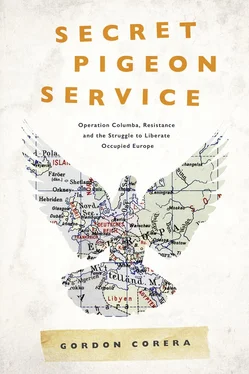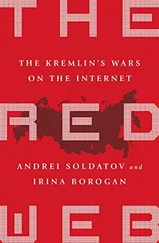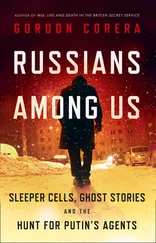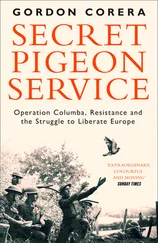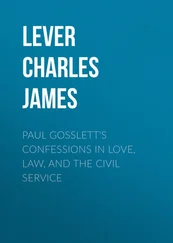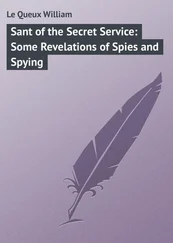Osman had ensured that the humble pigeon had its place in the machinery of war. But he was not inside the spy world. And the pigeon’s specific role in Columba – as a tool to get intelligence back from ordinary people behind enemy lines – was established thanks to the vision of Rex Pearson, a veteran of military intelligence in the previous war. But as the Second World War began, Pearson was a spy without a mission or role.
In the inter-war years, Pearson had – to all appearances – left the intelligence game for a career in business. In Switzerland he had become the representative for the British firm Unilever. But that was not the full picture. In the mid-1930s, he had resumed his clandestine life. He was recruited into the ‘Z’ organization. ‘Z’ was the brainchild of Claude Dansey, a powerful figure within MI6. Some called him ‘Uncle Claude’ because, at first sight, Dansey looked like an elderly uncle, white-haired and with a general air of benevolence. That impression never lasted for those who got to know him. Dansey was an acerbic, sharp operator whose penchant for secrecy and intrigue made him as many enemies as admirers and left junior officers terrified of him. He had achieved his lofty position by trusting nobody. In the thirties, he had realized that the Germans had worked out MI6’s use of the Passport Control Office in British embassies to hide its undercover officers. That made MI6 officers easy to identify. So Dansey set about building his own network across the continent, using businessmen.
The Z organization was a parallel intelligence network and Pearson – a colleague of Dansey’s from military intelligence in the First World War – was Z’s man in Zurich. Dansey himself moved to Switzerland to run the network late in the decade. But in November 1939 he returned to London to supervise all MI6’s European operations, leaving Pearson in charge in Switzerland. The results were disastrous. Chaos ensued as Pearson proved not to be up to the job. At one point he managed to send two different officers to the same rendezvous with a contact. His catastrophic performance may also have stemmed from the fact that he had a drink problem. Heavy drinking was common at the time, but Pearson’s seems to have been bad enough to have an adverse impact on his work. In February 1940, another MI6 officer was sent out to Switzerland to replace him.
Pearson returned to London, his intelligence career in apparent ruins just as the war was beginning. But in November 1940, he approached Military Intelligence with an idea. In the last two years of the First World War, he had been involved in a clever intelligence operation that he wanted to reprise. It involved pigeons. He was met, perhaps unsurprisingly, with a degree of bewilderment bordering on annoyance from the higher-ups. Pigeons were an ‘outmoded’ weapon in Britain’s armoury, he was told. But Pearson persisted, and explained to his superiors what he had got up to in the last war.
The first lesson from that war was that you could use pigeons for the core business of intelligence gathering. The intelligence the military wanted included things like the disposition and movement of enemy forces. If train-loads of soldiers were seen heading to a particular station, for instance, that might mean the Germans were about to make a push on the front at that point. Networks of agents had emerged, especially in Belgium, to collect this information in the previous war but the biggest challenge had been getting their information back from the other side. MI6 had employed couriers and specialist passeurs (line crossers), whose hazardous work involved cutting and crawling through barbed wire, wearing rubber boots to avoid being electrocuted while carrying details of German forces.
Inventiveness was at a premium. A colleague of Pearson had developed a system in which messages were written in invisible ink on banknotes and dropped in offertory boxes in Catholic churches, which were allowed to be taken across the front lines. Another officer was convinced that by standing in front of an oven and moving back and forth he could send ‘infra-red rays’ to signal with Morse code. Animals were another possibility. The pigeon with its homing instinct seemed an attractive option, and it was soon employed to carry intelligence back from agents.
But Pearson explained that he had been involved in a further innovation. What about not only using pigeons to send back intelligence from existing agents, but to actually recruit people to gather intelligence in the first place? There were sympathetic people on the other side who wanted to help. The challenge was finding them and then getting their intelligence back. In the First World War small hydrogen balloons had been sent out downwind from the British side of the front lines to any district where it was thought German forces were concentrated. Normally seven balloons were released in a night, each holding four carrier pigeons in their own basket with a parachute. At first, the baskets were attached to a cross-shaped device with an alarm clock in the middle. When it reached the right hour and rang it would release the parachutes. Later, a slow-burning fuse was employed.
Attached to the pigeons was an envelope containing a patriotic appeal and a questionnaire asking whether the Germans were present, and in what numbers. This could be filled in by locals and then clipped back onto the pigeon’s leg. By breakfast time, a quarter of the pigeons released at night had normally returned, half with messages. It bothered the Germans enormously. The chief of the German Intelligence Service had griped about their use and fourteen days’ leave were promised to any German soldier who shot a pigeon down. At least eleven were shot and found to be carrying important military information.
Pearson had been in charge of all balloon operations in France by the end of the First World War. Now he wanted to do it again. And better.
What Pearson had in mind this time round was much more ambitious. In the previous war, the pigeons had typically flown only fifteen or twenty miles across the front lines. Balloons dependent on the wind might be fine for delivering pigeons over enemy lines that you were sometimes close enough to observe. But in this new war, the challenge was much greater. Pearson wanted to see if pigeons could make it all the way from occupied Europe, over the Channel or North Sea and back home to England. The challenge of getting the pigeons to the target zone in the first place could be solved by dropping them from planes rather than balloons. The chances of their return home would depend entirely on the skill of the birds.
Pearson pressed his case, against considerable resistance. His old service MI6 (officially designated the Secret Intelligence Service, or SIS), which recruited agents to provide information abroad, was dismissive. It thought so little of the prospects that it said it wanted absolutely nothing to do with the idea and refused to co-operate. But Military Intelligence – based at the War Office and reporting to the Army, separate from MI6, which reported to the Foreign Office – eventually relented. It was a long shot but Columba, as the service was christened, offered the tantalizing chance to establish contact with untapped sources which Britain could reach by no other means. Pearson was appointed officer in charge of the Special Continental Section of the Army Pigeon Service, and soon a grandly titled ‘Special Section (Carrier Pigeon)’ team was set up in the Royal Corps of Signals. He would organize the logistics. Any messages that arrived back were to be sent on to a Military Intelligence team at the War Office. This meant Columba was rooted in the Army and not in the RAF – a source of abiding tension.
The first experimental pigeon drops took place at the end of 1940. Pigeon owners were told as little as possible about why their birds were needed. Early trials focused on how to transport the pigeons, and whether ‘head down’ or ‘tail down’ was better to avoid tail feathers being frayed. By January, a new container made their journey somewhat more comfortable as six birds were dropped from a Lysander plane at 130 feet. The parachute opened perfectly and the landing was gentle, but the container rolled over two or three times after reaching the ground. The pigeons did not appear ‘unduly frightened’, it was noted. They were given two minutes to recover before being liberated. Visibility was poor, so the birds circled for nine minutes or so trying to get their bearings before heading off to Aldershot. They covered ten miles in about fifteen minutes.
Читать дальше
